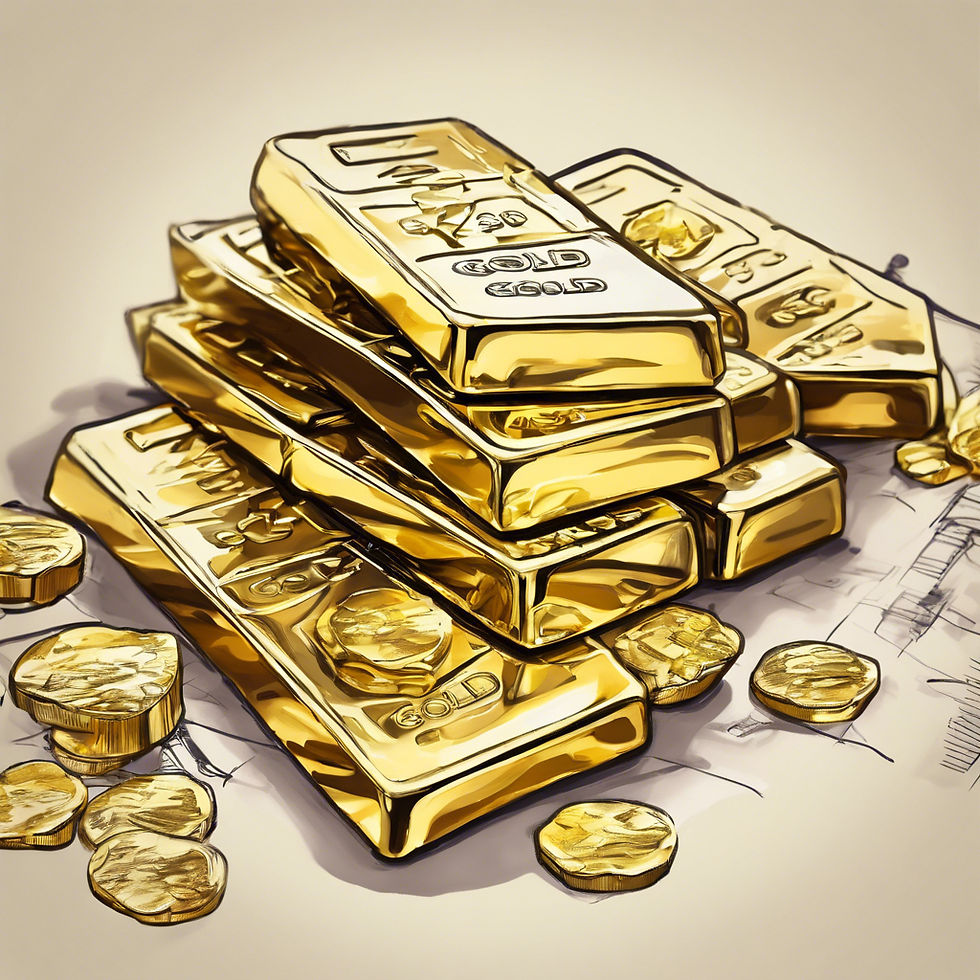Why 2025 Could Be the Year Gold Breaks the $3,000 Barrier
- johnwick

- Dec 20, 2024
- 2 min read
Updated: Dec 20, 2024

As global economic uncertainty continues to dominate headlines, investors are increasingly turning to gold as a reliable store of value. Recent insights, including commentary from Alan Hibbard, highlight why 2025 could mark a significant turning point for gold prices, potentially pushing them beyond the $3,000 per ounce threshold. Here, we break down the factors driving this potential surge and why it matters for investors.
1. Economic Instability and Inflation Pressures
The global economy is grappling with persistent inflationary pressures. Central banks worldwide, particularly the Federal Reserve, are attempting to manage inflation with interest rate hikes. However, the effectiveness of these measures is debatable. Historically, gold has performed exceptionally well in inflationary environments, as it retains intrinsic value when fiat currencies lose purchasing power. The continued erosion of trust in traditional currencies could push more investors toward gold in 2025.
2. Central Bank Gold Purchases
Central banks have been on a buying spree, amassing gold at unprecedented rates. This trend underscores the growing recognition of gold’s importance in safeguarding national reserves. For instance, in 2023 and 2024, central banks from emerging markets like China, Turkey, and India increased their gold holdings significantly. This demand from institutional buyers creates a robust foundation for price appreciation.
3. Geopolitical Tensions
The geopolitical landscape remains volatile, with ongoing conflicts, trade wars, and shifting alliances. These tensions not only disrupt global trade but also increase the appeal of safe-haven assets like gold. As the uncertainty continues into 2025, gold could further solidify its position as the ultimate hedge against geopolitical risks.
4. Dollar Weakness and Currency Devaluation
While the U.S. dollar remains the world’s reserve currency, cracks in its dominance are becoming more evident. De-dollarization trends, driven by nations seeking alternatives to U.S. economic hegemony, could accelerate in the coming years. A weakening dollar historically correlates with a rise in gold prices, adding another tailwind to gold’s potential rally in 2025.
5. Supply Constraints and Mining Challenges
The supply of gold is finite, and mining costs are rising due to stricter environmental regulations and diminishing high-grade deposits. These constraints limit the ability of the supply side to respond to surging demand, creating an imbalance that could push prices higher.
How to Position Yourself for the 2025 Gold Rally
If gold surpasses $3,000 per ounce in 2025, early investors stand to benefit significantly. Here are some strategies to consider:
Physical Gold: Holding physical gold, such as coins or bars, ensures direct exposure to price increases.
Gold ETFs: Exchange-traded funds like SPDR Gold Shares (GLD) offer a convenient way to invest in gold without physical storage concerns.
Gold Mining Stocks: Companies involved in gold mining could see amplified returns as gold prices rise.
Diversification: Consider diversifying your portfolio with other precious metals, such as silver, which often tracks gold’s performance but at a lower price point.
Conclusion
The potential for gold to break the $3,000 barrier in 2025 is underpinned by a confluence of economic, geopolitical, and market factors. For investors seeking to safeguard their wealth and capitalize on this historic opportunity, now is the time to act. As Alan Hibbard and other experts suggest, the window to invest in gold at current prices may be closing rapidly.
Stay informed and make the most of your gold investment journey with resources from Income From Gold.



Comments